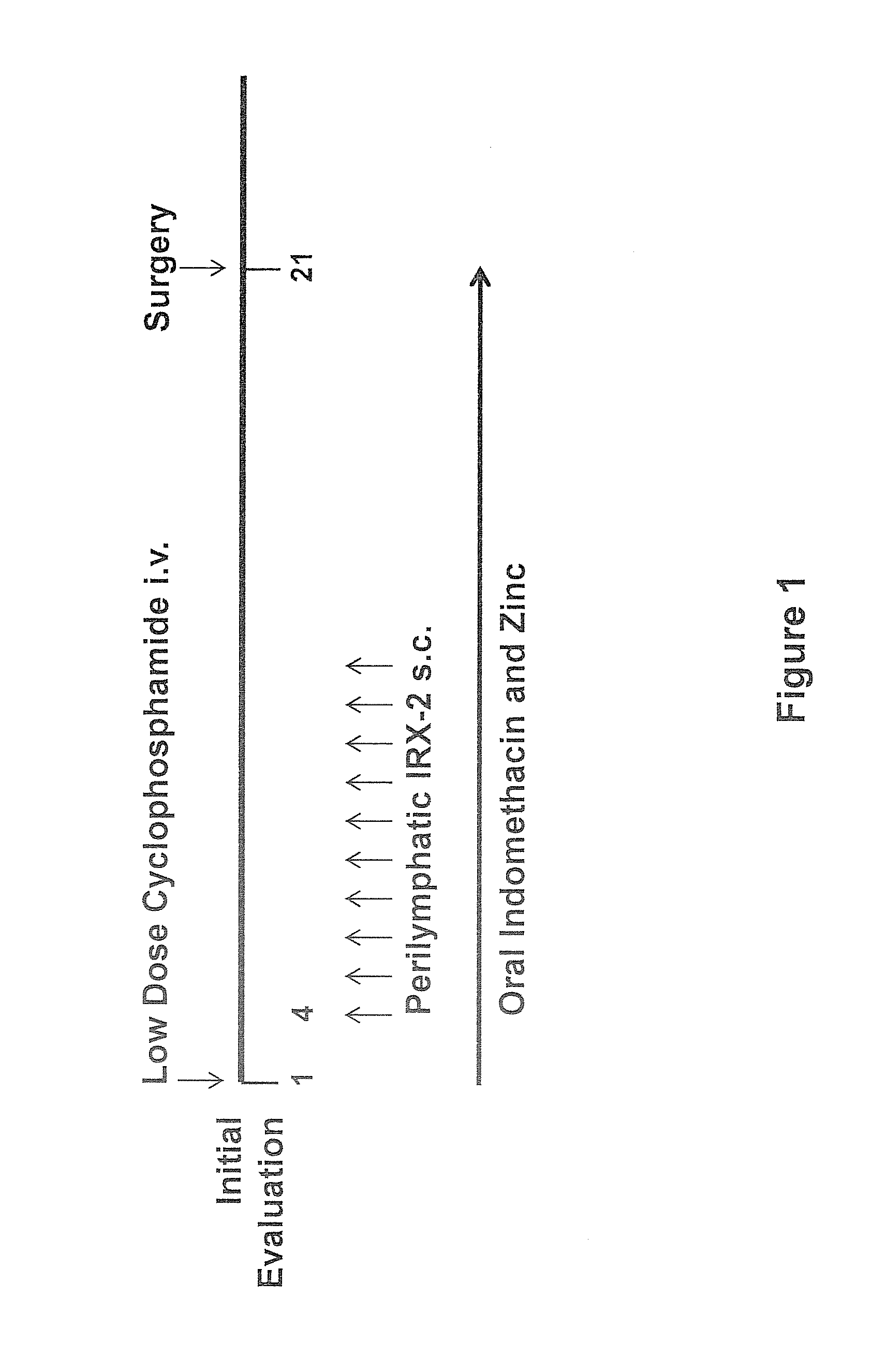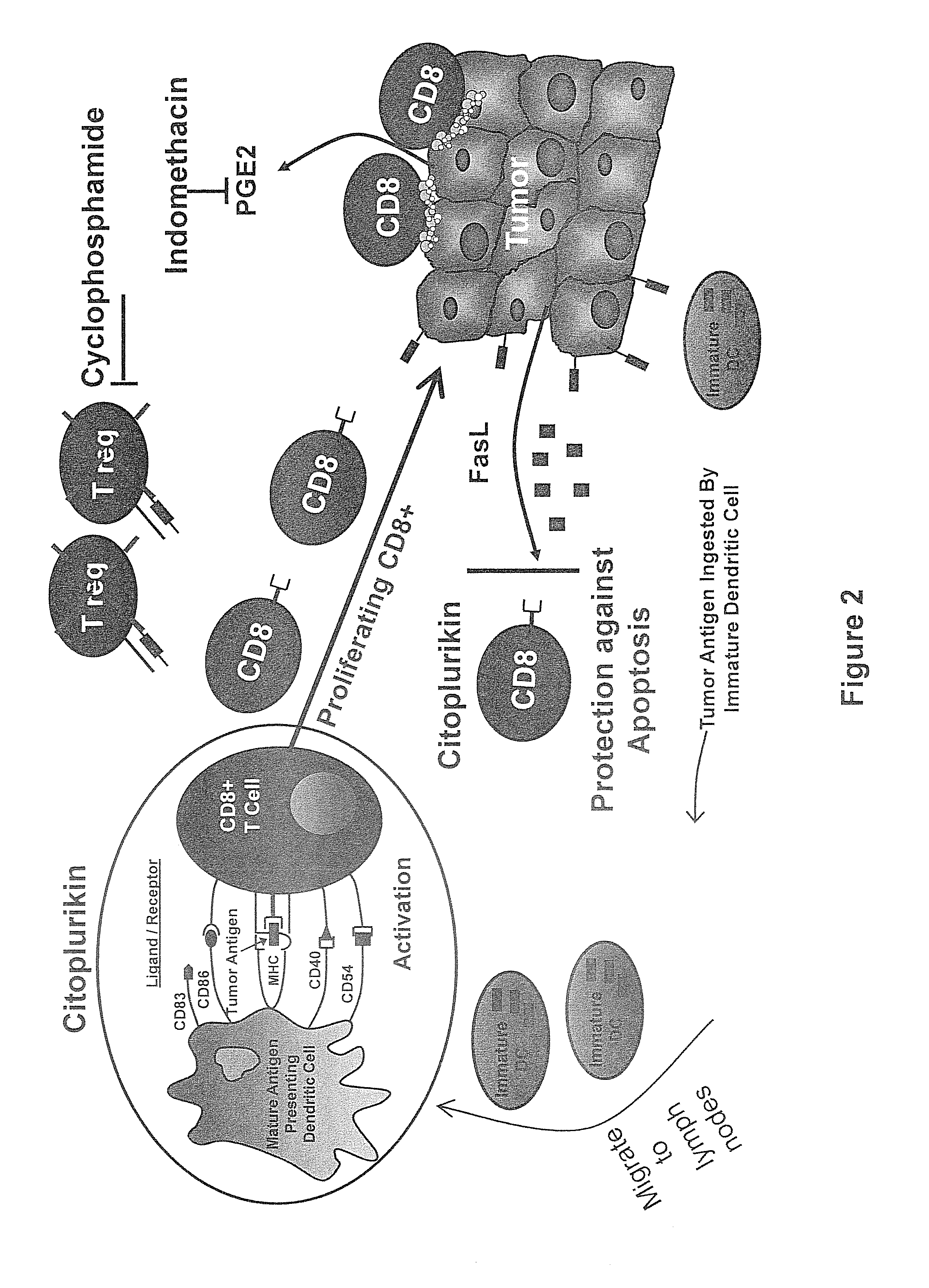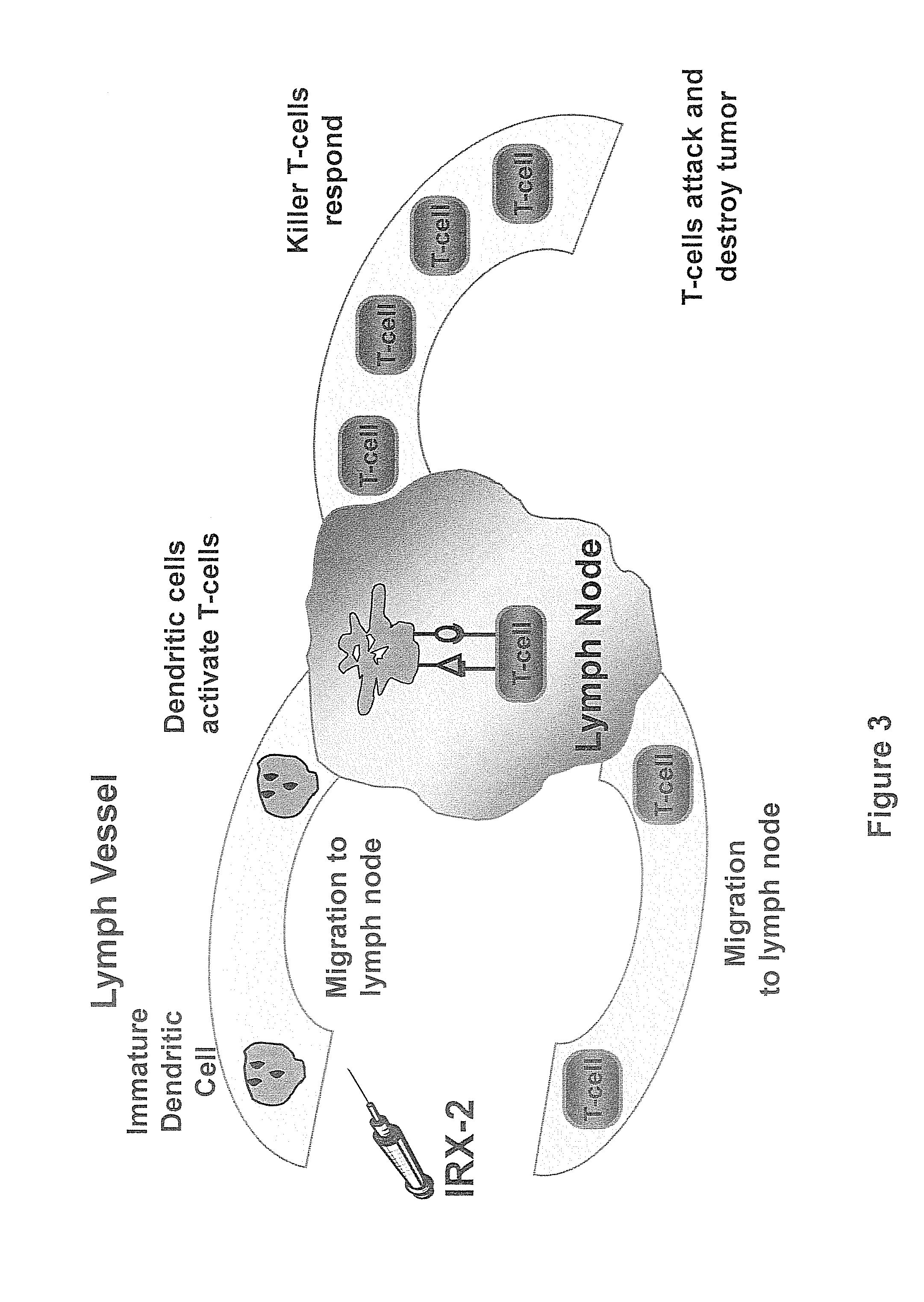Method of increasing immunological effect
a technology of immunological effect and immunological imbalance, applied in the field of methods, can solve the problems of serious problems such as inability to correct immune imbalance, and inability to actually do harm, so as to prevent apoptosis of lymphocyte/hematopoietic populations, reduce the effect of t cell apoptosis and reduce the number of effectors
- Summary
- Abstract
- Description
- Claims
- Application Information
AI Technical Summary
Benefits of technology
Problems solved by technology
Method used
Image
Examples
example 1
IRX-2 Protects Both Jurkat T Cells and Primary T Lymphocytes from Cell Death Mediated by a Variety of Apoptosis-Inducing Agents
[0150]To determine whether IRX-2 protects T cells from apoptosis mediated by tumor-derived microvesicles (MV), CD8+ FasL-sensitive Jurkat cells were pre-incubated with a 1:3 dilution of IRX-2 (approximately 4 ng / mL or 90 IU / mL IL-2) for 24 hours and subsequently treated them with 10 μg of tumor-derived MV (10 μg), CH-11 (400 ng / mL) or staurosporine (1 μg / mL) for 3 hours. As shown in Applicants' previous studies, the co-incubation of Jurkat cells with MV caused marked apoptosis, demonstrated by enhanced Annexin V binding (FIGS. 4A and 4C) and binding of FITC-VAD-FMK indicative of caspase activation (FIGS. 4B and 4D). Dead cells (7-AAD+) were excluded and the gate was set on 7-AAD negative CD8+ Jurkat cells. Upon pre-incubation of Jurkat T cells with IRX-2, the MV-induced apoptosis, as detected by both assays, was significantly reduced (FIGS. 4A-4D).
[0151]Inte...
example 2
IRX-2-Mediated Protection from Apoptosis is Time- and Concentration-Dependent
[0153]To better understand the protective effects of IRX-2 on T cells, CD8+ Jurkat cells were pre-incubated with IRX-2 (fixed dilution of 1:3=90 IU / ml IL-2) for incrementally longer time periods (0-24 hours) or with increasing concentrations of IRX-2 (as indicated) for a fixed 24 hour period and subsequently treated with MV (10 μg) for 3 hours (FIGS. 5A and 5B, respectively). Apoptosis was assessed using FITC-VAD-FMK staining of activated caspases by flow cytometry. IRX-2 was found to block MV-induced apoptosis, and this inhibition was time-dependent, as extending the time of the pre-incubation with IRX-2 intensified its protective effects. A maximal inhibition was observed after 24 hours of MV treatment (FIG. 5A). Pre-incubation of T cells with different IRX-2 concentrations showed a dose-dependent inhibition of apoptosis caused by MV (FIG. 5). At the highest possible concentration (i.e., undiluted IRX-2),...
example 3
Comparison of the Protective Effect of IRX-2 with the Effect of the Survival Cytokines IL-7 and IL-15: Caspase-Activation in Jurkat CD8+ Cells after Treatment with Tumor-MV
[0155]Jurkat CD8+ cells were plated at a density of 300,000 cells / 100 μL / well in a 96 well-plate and incubated for 24 hours with IRX-2 (1:3 final concentration), IL-7 (10 ng / mL), IL-15 (10 ng / mL), or both cytokines (10 ng / ML each), respectively. The cells were treated for 3 hours with PCI-13 / FasL-MV (15 μg). Jurkat CD8+ cells heated for 10 minutes at 56 degrees C. were used as a positive control. The cells were harvested, washed in 1 mL PBS, resuspended in 500 μL PBS, and stained with 5 μM VAD-FITC at 37 degrees C. for 20 minutes. Then the cells were washed in PBS and stained for 15 minutes for CD8-PE-Cy5. After washing, the cells were fixed in 1% PFA and analyzed by multiparametric flow cytometry.
[0156]The percent of activated caspase-VAD-FITC binding CD8+ Jurkat cells were determined for each treatment group as ...
PUM
| Property | Measurement | Unit |
|---|---|---|
| temperature | aaaaa | aaaaa |
| concentration | aaaaa | aaaaa |
| time | aaaaa | aaaaa |
Abstract
Description
Claims
Application Information
 Login to View More
Login to View More - R&D
- Intellectual Property
- Life Sciences
- Materials
- Tech Scout
- Unparalleled Data Quality
- Higher Quality Content
- 60% Fewer Hallucinations
Browse by: Latest US Patents, China's latest patents, Technical Efficacy Thesaurus, Application Domain, Technology Topic, Popular Technical Reports.
© 2025 PatSnap. All rights reserved.Legal|Privacy policy|Modern Slavery Act Transparency Statement|Sitemap|About US| Contact US: help@patsnap.com



